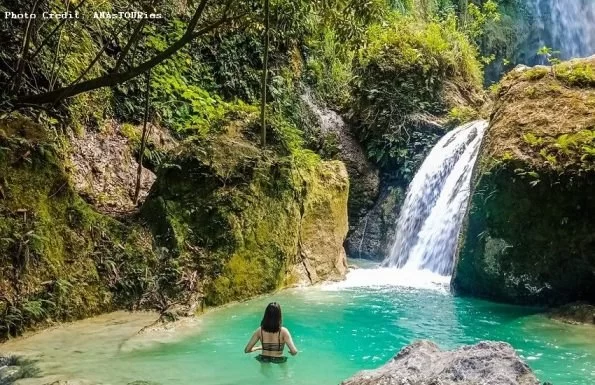- understanding-the-art-of-waterfall-chasing-campsite-selection
- how-to-research-and-locate-waterfall-rich-camping-destinations
- key-features-to-look-for-in-a-campsite-for-waterfall-exploration
- real-world-stories-from-waterfall-chasing-campers
- final-thoughts-and-where-to-find-curated-camping-support
1. Understanding the Art of Waterfall Chasing Campsite Selection
For many outdoor lovers, few things compare to the thrill of discovering a cascading waterfall hidden deep within nature. Waterfall chasing is more than just a scenic hike—it's about the journey, the sound of rushing water, the mist in your face, and the tranquility that only these natural wonders can provide. But to fully embrace this experience, your basecamp matters. Choosing the right campsite for waterfall chasing sets the tone for your adventure and determines whether your trip is energizing or exhausting.
The perfect campsite should give you both proximity to waterfalls and a comfortable launching pad for early morning treks or sunset views. In short, it should keep you close enough to chase the falls without chasing down your sanity.
2. How to Research and Locate Waterfall-Rich Camping Destinations
2.1 Use Trail and Topo Maps Strategically
Waterfalls aren’t always marked clearly on popular hiking apps. Invest time in reading topographical maps and overlaying them with national or state park trail guides. Look for sharp elevation drops near rivers or streams—these usually signal a waterfall nearby. Tools like Gaia GPS or AllTrails Pro can help cross-reference campsite access with waterfall routes.
2.2 Talk to Local Rangers and Online Communities
Don't underestimate the knowledge of local park rangers or fellow outdoor enthusiasts in online forums. Reddit threads, regional Facebook camping groups, and hiking clubs often hold first-hand accounts of campsites within a stone’s throw of lesser-known falls.
2.3 Seasonal Awareness Matters
Waterfalls are seasonal by nature. Late spring and early summer are peak flow times in many regions. Try to time your trip after snowmelt or rainy seasons. Some campsites that appear average on a dry week can be near roaring falls just a month later.
3. Key Features to Look For in a Campsite for Waterfall Exploration
3.1 Distance and Accessibility
Ideally, your campsite should be within a few miles of multiple waterfall hikes—this gives you flexibility and minimizes time spent on logistics. Trailhead proximity is critical. Some campsites offer direct access to trail systems without the need to drive and park elsewhere.
3.2 Terrain and Elevation
Consider the elevation of your basecamp relative to the surrounding terrain. A campsite nestled near river valleys or at the base of ridgelines often means you’ll be close to cascades. Be sure to check if the elevation could mean colder nights or higher humidity from nearby water.
3.3 Shelter and Safety Factors
Look for shaded areas that offer protection from wind and heavy mist. Avoid low-lying areas prone to flash floods—especially near streams fed by waterfalls. Use caution in early spring or after heavy rains, as water levels can rise rapidly.
3.4 Amenities and Solitude Balance
Decide what you need—vault toilets, bear lockers, or just raw nature. Many of the best waterfall-chasing spots are primitive, but it’s a tradeoff for quiet mornings and the sound of waterfalls in the distance. If you’re new to this kind of camping, places like Pine Cliff Resort can offer the right blend of wild surroundings with enough comfort to keep your trip safe and manageable.
4. Real-World Stories from Waterfall Chasing Campers
Consider the case of Marissa and Tom, a couple who spent a week camping near North Carolina’s Linville Gorge. “We picked our site based on a ranger’s advice, and it ended up being just a 10-minute hike to two different waterfalls. The best part? We woke up to mist floating through the pines and the low thunder of water every morning,” Marissa recalls.
Another story comes from Aaron, a solo backpacker who targeted campsites in Oregon’s Columbia River Gorge. “I used to camp where it was convenient, but after my second waterfall trip, I realized the magic happens when your site becomes part of the experience. Now I plan my whole trip around waterfall access—and it's changed everything.”
5. Final Thoughts and Where to Find Curated Camping Support
5.1 Plan with Purpose, Not Just Convenience
The best campsites for waterfall chasing often require more planning than your average campground reservation. But that effort pays off in stunning views, peaceful evenings, and the kind of rejuvenation only falling water can offer. Approach your search with intention—use tools, ask questions, and scout your trails before committing.
5.2 Gear and Support That Matches the Mission
From waterproof tarps to hammock systems and proper trail footwear, the right gear turns a good trip into a great one. For curated products and campsite advice tailored to nature-focused adventurers, Pine Cliff Resort offers equipment and recommendations trusted by real outdoor lovers.
5.3 Leave No Trace Behind
Always respect the land. Waterfall ecosystems are fragile and easily impacted by human traffic. Camp responsibly, use designated sites when available, and pack out everything you pack in. A clean trail is a welcoming trail—for both nature and future hikers.







